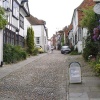 |  | 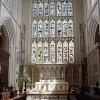 | 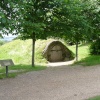 | 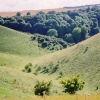 | 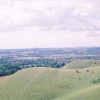 |
| Rod Burkey Posts: 554 Joined: 2nd Sep 2008 Location: UK | quotePosted at 11:57 on 27th April 2014 Colours and the range of hues sometimes need to be captured with a degree of accuracy. With digital technology, things have been made a whole lot easier, but some care and post production work is required to bring out the best in portraiture and when attempting to capture a subject dominated by colour. Skin tones come pretty high up the list of required accuracy. I used to do occasional weddings and the colours are obviously of great importance, especially the colour of the bride's dress, "Ivory" being a popular choice. Ivory is a warm white and can easily come out as pure white in the photographs and slip through that most unreliable quality control tool, the human eye, especially one with a lot of images to produce. Before my penultimate wedding job I purchased an “X-rite Colorchecker” passport”, which is a small piece of kit that can be slipped into the pocket and comes with software. This little gem which came at about £70 was worth its weight in gold and has allowed me to get the shades correct for runs of shots taken in the lighting conditions used for the test shot. I don’t use the Colorchecker all the time by any means, but when taking an important portrait I have been very grateful to have had it in my pocket. It also includes a white balance. My most recent use of it was for two sessions, one of a mother to be and her “bump” in a studio, the other of a couple celebrating their anniversary. It worked well in both situations. Getting the monitor to give you the same rendition as on the viewing screen of the camera is hard enough, but then of course you have to be able to print off an image which does the same. You can spend a great deal of cash on this and is a huge subject. A “pro” monitor comes with a four digit price tag generally, and one can buy some decent lenses and other stuff for that. I suppose, if I’m honest, one can get too bogged down with all this, unless you are working commercially. Then, if you take a picture of anything branded for example the colour has to match exactly the corporate colour of the brand and this involves pantones. Don’t go there unless you have to! Enjoy the fun first. Eyes getting heavy yet? Maybe a new / additional thread would be a good idea.
Edited by: Rod Burkey at:27th April 2014 13:02 |
| James Prescott Posts: 25953 Joined: 11th Jan 2010 Location: UK | quotePosted at 13:05 on 27th April 2014 Yes it is a long thread Rod but i may say a good one
Enjoy the game yesterday?? Edited by: james prescott at:27th April 2014 13:06 |
| Edward Lever Posts: 734 Joined: 22nd Dec 2005 Location: UK | quotePosted at 13:09 on 27th April 2014 Rod, I took the challenge and just about stayed awake through all of the above and now I understand your need for the 'colorchecker'. Producing prints as the end-product is much more demanding on colour accuracy than viewing an image on a screen or a projector. The viewer's eye compares the colours of the print with the colours of the immediate surroundings in the same illumination, whereas a screen is much brighter than the surroundings, and the eye can accept much wider differences in white balance. This was also true with film. Viewing a colour slide as a projected image in a darkened room didn't make demands on white balance because there was no reference object for the eye to compare. However, if you tried to make a print from the same slide, then getting the right white balance was challenging to say the least, with much fiddling about with magenta, yellow and cyan filters. |
| Rod Burkey Posts: 554 Joined: 2nd Sep 2008 Location: UK | quotePosted at 14:32 on 27th April 2014 Ah, the joys of Cibachrome. Jolly hard work in the dark, waiting for a result. like you Edward I enjoyed projecting my slides, including Kodachrome 25. Imagine taking shots now at ISO 25! |
| Edward Lever Posts: 734 Joined: 22nd Dec 2005 Location: UK | quotePosted at 14:59 on 27th April 2014 On 27th April 2014 14:32, Rod Burkey wrote:
Advantages were the stability of the dyes and the superb colour saturation. You could work at room temperature too, unlike many of the negative processes. I would like to think that all that messing about with chemicals was not a wasted experience. Digital is less messy for sure, but the satisfaction of creating a finished print in your kitchen or bathroom was somehow exciting. As for Kodachrome 25, superb saturation, but I hated those cardboard slide mounts. |
| Edward Lever Posts: 734 Joined: 22nd Dec 2005 Location: UK | quotePosted at 09:11 on 28th April 2014 On 27th April 2014 23:17, John Lawrence wrote:
Whether the image is viewed on a screen or is printed, it can never accurately reproduce the full range of brightness levels and subtlties of colour which your eye saw at the original scene. The final adjustment of the image is a matter of personal preference, so it is really up to the photographer as to the interpretation. One thing is sure, it is much easier to adjust the image digitally than in the days of film, when it was much more trial and error.
|
| Zbigniew Siwik Posts: 26 Joined: 30th Dec 2008 Location: Poland | quotePosted at 20:40 on 28th April 2014 You are right Edward , now is much easier . |
| Dave John Posts: 22335 Joined: 27th Feb 2011 Location: England | quotePosted at 20:42 on 28th April 2014 Much easier definitely, and you can recover processing errors that would have cost a fortune reprinting on colour paper... |
| Paul Hilton Posts: 2605 Joined: 21st Nov 2004 Location: UK | quotePosted at 01:35 on 29th April 2014 If anyone is interested, in a current issue of an outdoor photography magazine, there's a free 140 page book about processing Raw images by noted animal and nature photographer Andy Rouse. |
| Vince Hawthorn Posts: 12758 Joined: 19th Apr 2010 Location: UK | quotePosted at 22:49 on 30th April 2014 In search of quaility here- technique and practice is obviously the way to go but I am failing sadly at the moment trying to capture our feathered friends in flight. Number one just keeping the blighters in the viewfinder is difficult enough and getting focus when you do is nearly impossible, I am not quick enough to pan and keep the target in my sights and focus- any hits and tips folks apart from keep trying which I intend to do. One question- manual or auto focus? The lens seems to do a lot of searching by which time it is too late. Any help greatly appreciated- thank you. |